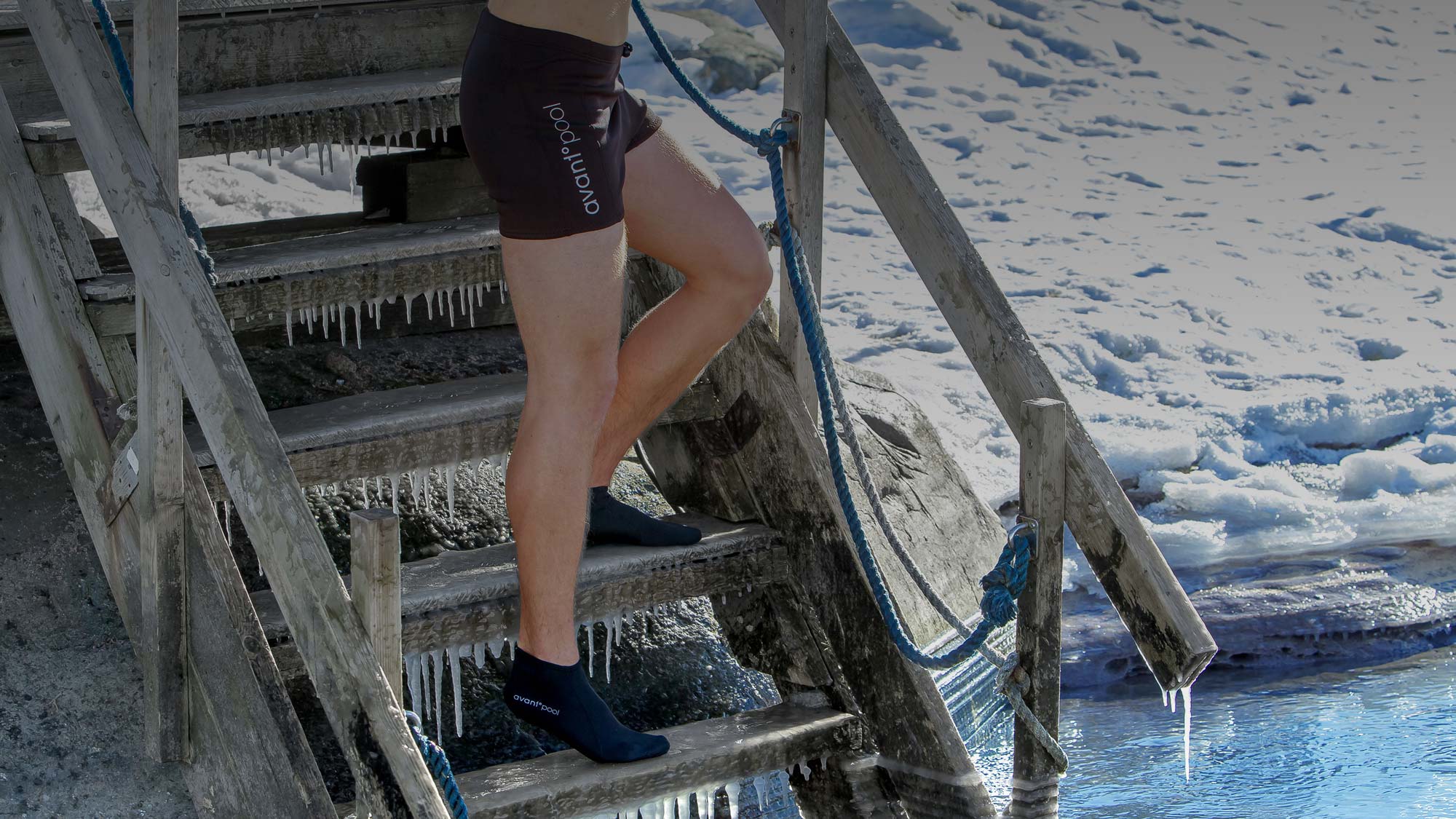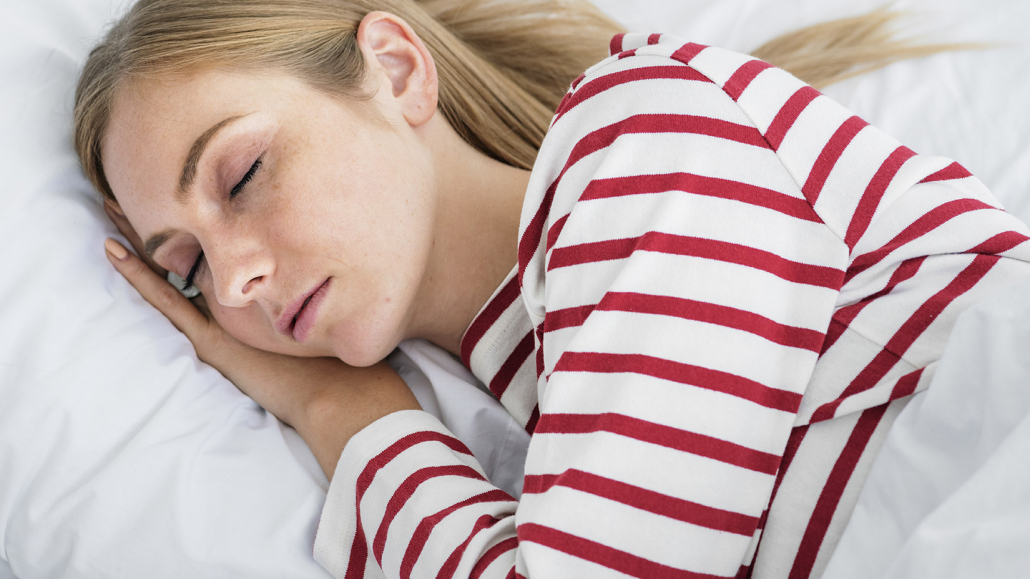Cold is proven to be good for both the body and the mind. Cold therapy increases health and wellbeing in many different ways.

Cold speeds up recovery
In top sports, cold recovery has long been an integral part of the recovery process for athletes. After a sports activity, the body recovers faster when exposed to cold. In addition, cold therapy reduces delayed muscle pain after a workout.
Cold recovery is suitable for all sports that require good muscle and performance recovery. Reaching the maximum benefit level requires a controlled process with the right water temperature and duration of submersion.
In addition to cold recovery, cold is also used in sports to cool the body in hot conditions before or after sports activities and for the acute treatment of sports injuries.
Steps for the right recovery
-
Exercise or competition
-
Active aerobic recovery
-
Stretching
-
Recovery drink
(carbohydrate and protein) during stretching
Cold recovery
e.g. 5 min. in cold 10 °C water
Washing up and wearing dry, warm clothes
Body relaxation
before 8-10 hours of sleep
We provide more specific, alternative and sport-specific instructions for athletes on the use of a cold pool when purchasing a unit.
The instructions have been prepared together with Antti Mero, professor at the Department of Exercise Biology at the University of Jyväskylä, who has studied research in sports extensively.
Cold relieves pains
Many people with musculoskeletal disorders feel that they benefit from cold treatments. Cold treatment is one of the most common physical treatments and self-treatment methods. It’s used to reduce pain, inflammatory reactions and swelling caused by injuries or diseases. Inflammation of the muscles and joints is relieved when local blood circulation increases under the influence of cold.
Cold causes a stress reaction in the body that results in the seccretion of noradrenaline, the contraction of the skin’s surface blood vessels, and an increase in blood pressure and heart beats. Repeated cold exposure increases the body’s ability to produce pain relief contraindications and improves perceived health and wellbeing. According to Finnish studies, plasma’s noradrenaline content increases by 2-3 times after ice swimming, which may promote pain relief.
The cold pool brings many people relief from all kinds of aches and pains. It’s also a safe way to relieve the pain caused by infections. Pain meter studies have shown a significant decrease in the pain expressed by subjects during the cold treatment period compared to the control period.

Cold improves resistance
Cold exposure also improves resistance. Cold activates immune function and strengthens myocardial and blood circulation. For example, ice swimmers experience an increase in resistance and a decrease in upper respiratory tract infections, and more than half also report a marked reduction in flu symptoms. The results suggest the adaptation of the immune system to cold.
Cold also activates the stress hormone adrenaline. According to a new study, the human nervous system and natural immunity are interconnected. The cold pool challenges the body beyond its comfort zone, which has a direct effect on immune functions. In addition, the functioning of the nervous system in the cold affects oxygen uptake, which is reflected in increased energy.
A Dutch study examined the impact of regular cold showers on the health of more than 3,000 subjects. The follow-up period resulted in a reduction in sick leave for those who took a cold shower regularly. The cold pool is an excellent, controlled and adjustable method of regular cold exposure that also brings many other benefits.
Cold reduces stress, raises mood and revitalizes
Cold water helps stimulate the chemicals in our brain. These chemicals control our emotions, concentration and alertness. Cold water causes a stress reaction when the body begins to secrete the stress hormones adrenaline, noradrenaline and cortisol. At the same time, increased levels of the pleasure hormones endorphin, serotonin and dopamine are also released.
The cold pool is a great, natural and effective way to increase the level of neurotransmitters in the brain. Temperature variation creates a chemical burst that makes you feel good and boosts energy. Cold water also allows you to build up a higher stress tolerance.
Regular and sufficiently frequent cold exposure is the key to improving cold tolerance and unlocking all of the potential health benefits of cold. Studies have shown that regular ice swimming increases the amount of dopamine and endorphins in the blood, which is associated with a decrease in depression and stress and an improvement in stress tolerance. Two out of three cold swimmers experience improved mental function and lower stress levels. Cold water dips also reduce the amount of uric acid in the body, which helps to control stress.
Cold water baths have been successfully used, for example, in the treatment of postpartum depression. Studies have also shown that regular cold exposure has sometimes even been effective in cases where medication has not worked.

Cold improves sleep quality
In Finland, ice swimming has always been seen as a cure for aches, stress and sleep problems. A more scientific approach and studies among ice swimmers reveal that there are a number of causes behind the positive effects of cold water.
Cold exposure facilitates sleep and improves the quality of sleep through the body’s own nervous system. The effect of cold releases serotonin, which helps alleviate difficulty sleeping. The effects of cold on achieving higher quality sleep are largely caused by the same factors that positively impact mood.
Long, high-quality sleep is important for everyone, but ensuring adequate and high-quality sleep is especially important for competitive athletes who need to be in optimal condition almost every day. Today, more and more attention is being paid to recovery, rest and sleep as part of an athlete’s overall coaching plan and wellbeing.
Cold activates brown fat
Brown fat is active adipose tissue with more blood vessels and a busier metabolism than white adipose tissue. Brown fat is able to produce heat and consume energy instead of storing it. The main function of brown fat is thermogenesis.
Cold exposure is one of the most effective means of activating brown – or more correctly beige when inactive – fat, and regular cold exposure is a very effective means of activating brown fat. Active brown fat consumes energy and is able to remove excess fat from the bloodstream. There’s only about 60–100 grams of brown fat in an adult’s body, but tissue activation is estimated to burn the same amount of energy as one or two kilograms of fat per year.
Brown fat can protect against obesity, fatty organs and type 2 diabetes, which has become a national disease in Finland. Therefore, regular cold exposure in a controlled, easy-to-use cold pool can provide health benefits for many people.
For diabetics, brown fat and increasing its activity in the body can be significantly helpful because brown fat removes cholesterol and fatty acids from the blood. In addition, as insulin-sensitive tissue, brown fat improves glycemic control. The low level of brown fat may be one of the risk factors for type 2 diabetes based on the assumption that weight control will be facilitated by active brown fat.
Studies have shown that in overweight people, brown fat metabolism is not increased in cold or with insulin as much as for people who are normal weight. Therefore, actual weight loss must be carried out by conventional means, but activating brown fat in a cold pool, for example, can help maintain the weight loss results and ensure more long-term weight control.
The activation of brown fat lasts as long as the cold exposure, but ice swimmers, for example, have very active brown fat, even though they are in the icy water for only a short time. The increase in total energy consumption caused by cold is 10% higher for those with active brown fat. In a normal-weight person, acute cold exposure doubles the use of brown fat glucose, doubles blood flow and oxygen consumption, and approximately triples fatty acid consumption. The metabolism of functional brown fat increases several times as a result of cold exposure.
